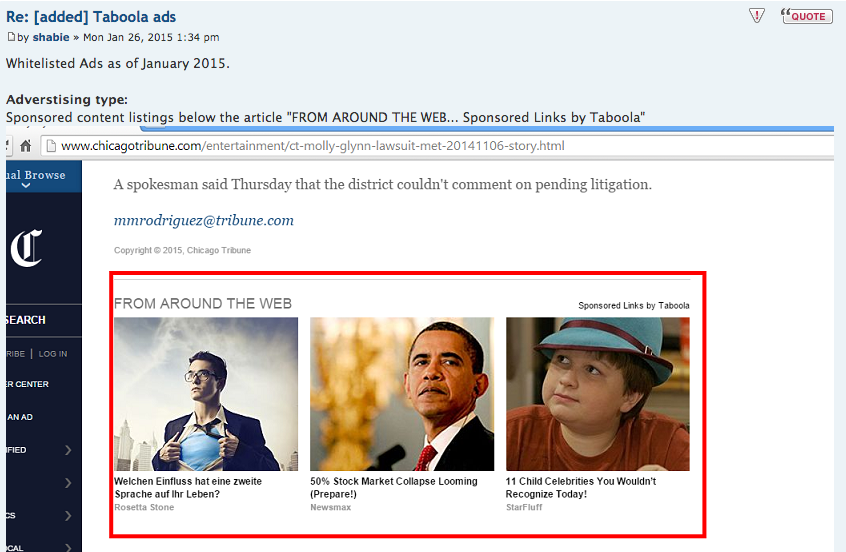Since 2011, AdBlock Plus, a popular browser plugin that blocks online ads, has kept a “whitelist” of websites that are allowed to serve ads despite the presence of the AdBlock Plus plugin. In an e-mail to Ars, AdBlock Plus Communications Manager Ben Williams wrote that currently, the browser extension has granted a pass to "over 300 sites/entities" out of "over 1,500 applicants" to the company's whitelist. That's up from October 2013, when AdBlock Plus allowed the ads of 78 sites or entities out of 777 applicants.
To be placed on AdBlock Plus’ whitelist, advertisements must be transparent about being ads, must be appropriate to the site they’re being served on, and must not distort or disrupt the page content, among other criteria. AdBlock Plus goes into more detail about the whitelisting process here.
But one important facet of the business plan is that if a company is big enough, AdBlock Plus' parent company, German start-up Eyeo, asks for a fee in addition to adhering to the "Acceptable Ads" criteria before it allows a company to be whitelisted.
That creates an interesting ecosystem between major companies whose bottom line depends on advertising and the increasingly popular AdBlock Plus. (According to PageFair and Adobe, AdBlock Plus has 144 million active users [PDF]).
On Sunday, the Financial Times confirmed paid deals between Google, Microsoft, Amazon, and ad-serving company Taboola with AdBlock Plus. Although all four companies have been publicly listed in the forums for years as having had ads whitelisted, the confirmation of a monetary exchange shows that these major companies see ad blocking as a hit to their bottom lines.
For smaller websites, whitelisting is usually free as long as certain criteria are met as outlined in AdBlock Plus’ “Acceptable Ads Initiative." In 2013, AdBlock Plus wrote that only 10 percent of its whitelisted ads had paid to be whitelisted. According to Williams, that number remains about the same today: less than 10 percent of the sites and entities whitelisted by AdBlock Plus have paid spots on the whitelist.


 Loading comments...
Loading comments...
